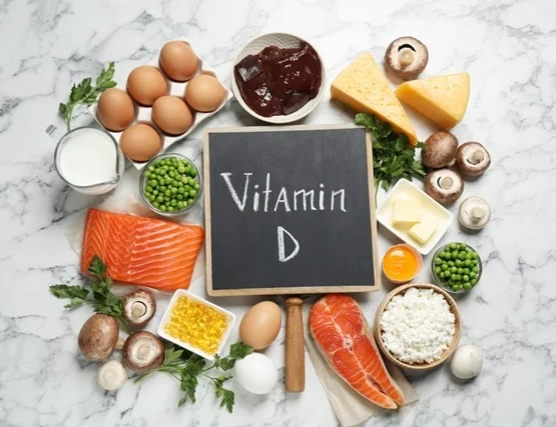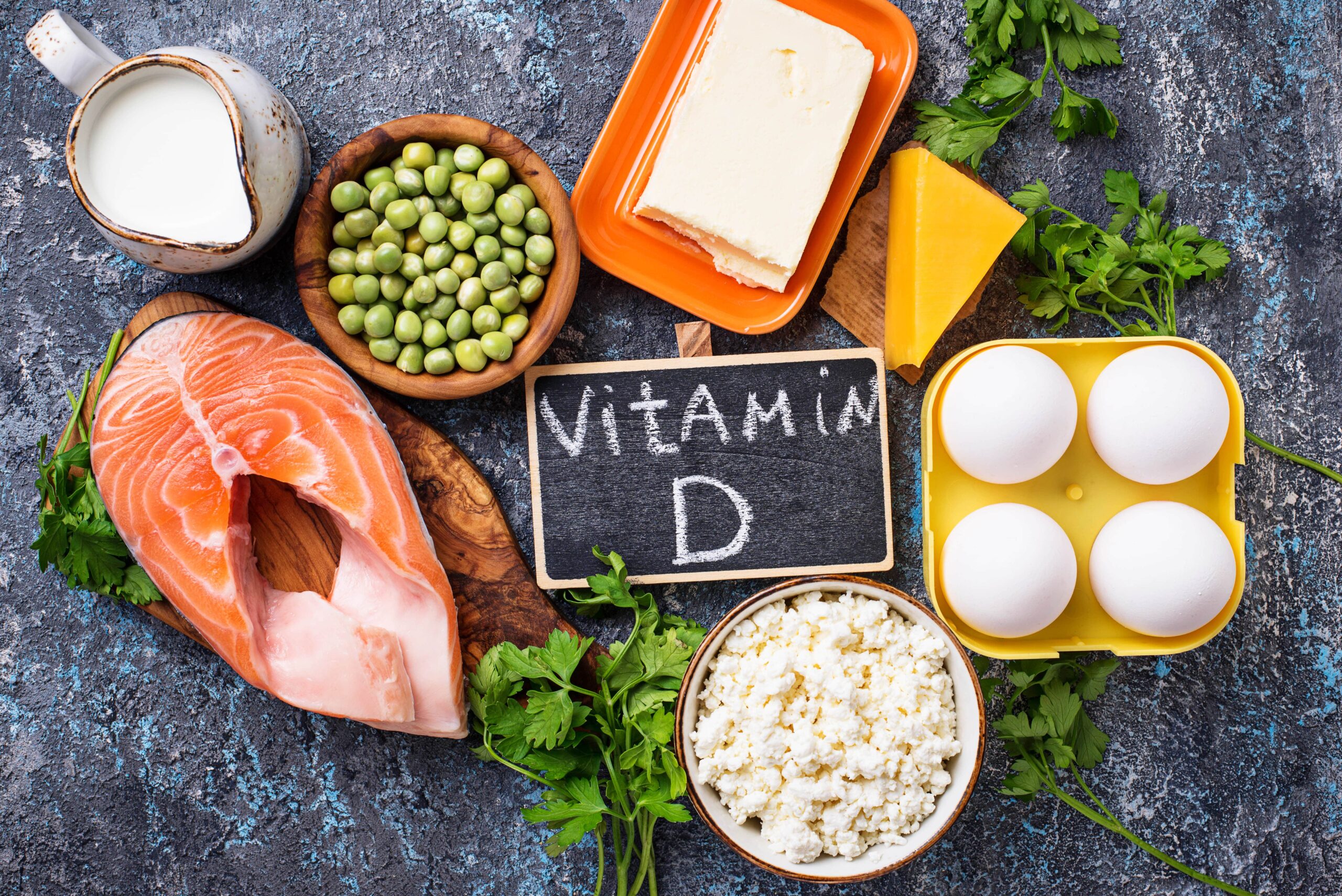Natural Source Of Vitamin D
types of vitamin D
 Vitamin D refers to a group of fat-soluble secosteroids responsible for increasing intestinal absorption of calcium, magnesium, and phosphate, and many other biological effects. The two major types of vitamin D are:
Vitamin D refers to a group of fat-soluble secosteroids responsible for increasing intestinal absorption of calcium, magnesium, and phosphate, and many other biological effects. The two major types of vitamin D are:
Vitamin D2 (ergocalciferol): This form of vitamin D is derived from plants, particularly fungi and yeast. When exposed to ultraviolet (UV) radiation, ergosterol, a compound found in these organisms, is converted into vitamin D2. It’s commonly used in fortified foods and supplements.
Vitamin D3 (cholecalciferol): This is the form of vitamin D synthesized in the skin of animals, including humans, when exposed to sunlight. It’s also found in some animal-based foods, such as fatty fish (like salmon and mackerel), fish liver oils, and egg yolks. Vitamin D3 is also commonly used in dietary supplements.
Both forms of vitamin D are converted in the liver to 25-hydroxyvitamin D [25(OH)D], the main circulating form of vitamin D, and then further metabolized in the kidneys to its active form, 1,25-dihydroxyvitamin D [1,25(OH)2D], also known as calcitriol. These active forms of vitamin D play crucial roles in maintaining calcium and phosphorus balance in the body, promoting bone health, modulating cell growth, supporting immune function, and reducing inflammation.
Natural Source Of Vitamin D
Vitamin D is a unique nutrient because it can be synthesized by the body through exposure to sunlight. When your skin is exposed to sunlight, it produces a type of cholesterol called 7-dehydrocholesterol, which then converts into vitamin D3 (cholecalciferol) under the influence of UVB rays.
The recommended daily intake of vitamin D varies depending on age, sex, and other factors. Generally, adults need around 600-800 IU (International Units) per day, but this may vary based on individual circumstances and health conditions.
Sunlight:
- Ultraviolet B (UVB) rays from sunlight trigger the synthesis of vitamin D in the skin.
- Exposing large areas of the skin, such as the arms and legs, to sunlight for about 10-30 minutes a few times per week can help maintain adequate vitamin D levels.
- Factors such as time of day, season, latitude, skin pigmentation, and use of sunscreen can affect the body’s ability to produce vitamin D from sunlight.
Fatty Fish (such as salmon, mackerel, and tuna):
- Fatty fish are among the richest natural dietary sources of vitamin D.
- A 3.5-ounce (100-gram) serving of cooked salmon can provide around 570-680 IU of vitamin D, depending on the species and other factors.
- Consuming fatty fish regularly can contribute significantly to meeting vitamin D requirements.
Fish Liver Oils (such as cod liver oil):
- Fish liver oils, particularly cod liver oil, are concentrated sources of vitamin D.
- A single tablespoon (about 15 ml) of cod liver oil can provide well over the daily recommended intake of vitamin D for most adults.
- It’s important to use caution with cod liver oil supplementation due to its high vitamin A content, which can be harmful in excess.
Egg Yolks:
- Egg yolks contain small amounts of vitamin D along with other nutrients.
- The amount of vitamin D in eggs can vary depending on factors such as the hen’s diet and exposure to sunlight.
- Including eggs in the diet can contribute to overall vitamin D intake, especially when consumed as part of a varied diet.
Mushrooms (especially those exposed to sunlight):
- Some varieties of mushrooms, such as maitake and shiitake, can naturally produce vitamin D when exposed to sunlight or ultraviolet light during growth.
- The vitamin D content of mushrooms can vary, but exposure to sunlight can significantly increase their vitamin D levels.
- Including sun-exposed mushrooms in meals can provide a plant-based source of vitamin D for individuals following vegetarian or vegan diets.
Fortified Foods (such as milk, orange juice, and cereals):
- Many foods are fortified with vitamin D to help individuals meet their nutritional needs, especially in regions where sunlight exposure is limited.
- Fortified milk, orange juice, and breakfast cereals often contain added vitamin D in the form of either vitamin D2 or vitamin D3.
- Fortified foods can be a convenient way to increase vitamin D intake, particularly for individuals who may have limited access to natural food sources or insufficient sun exposure.
